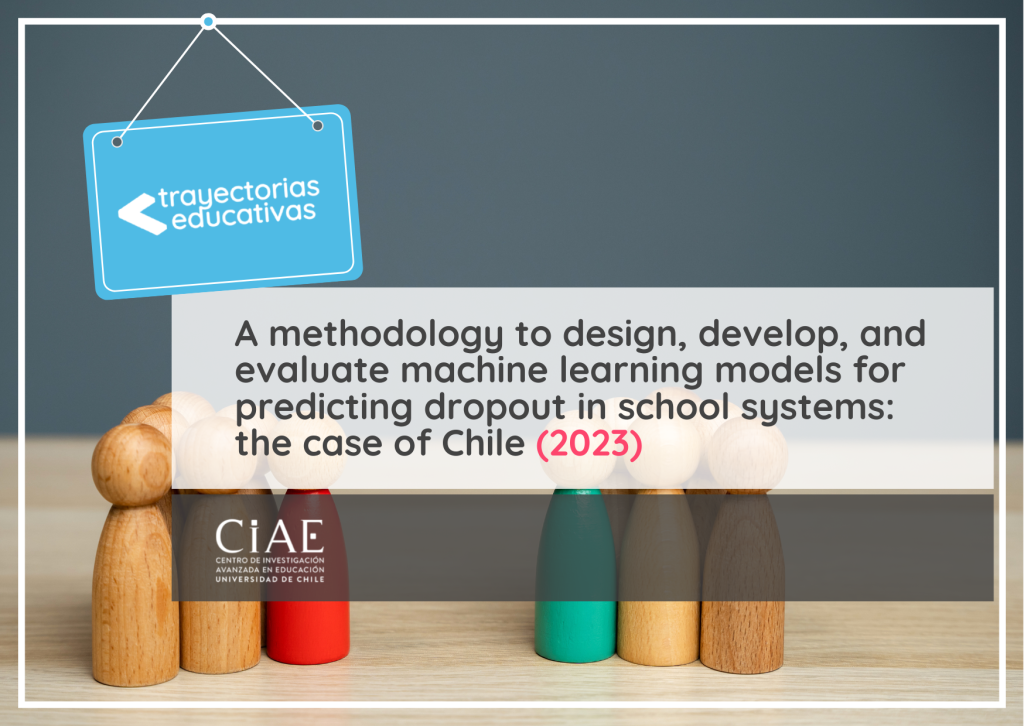AUTORES: Rodríguez, Patricio; Villanueva, Alexis; Dombrovskaia, Lioubov, Valenzuela, Juan Pablo.
AÑO DE PUBLICACIÓN:2023
INSTITUCIÓN: CIAE
DISPONIBLE EN:
https://link.springer.com/article/10.1007/s10639-022-11515-5
RESUMEN:
School dropout is a structural problem which permanently penalizes students and society in areas such as low qualification jobs, higher poverty levels and lower life expectancy, lower pensions, and higher economic burden for governments. Given these high consequences and the surge of the problem due to COVID-19 pandemic, in this paper we propose a methodology to design, develop, and evaluate a machine learning model for predicting dropout in school systems. In this methodology, we introduce necessary steps to develop a robust model to estimate the individual risk of each student to drop out of school. As advancement from previous research, this proposal focuses on analyzing individual trajectories of students, incorporating the student situation at school, family, among other levels, changes, and accumulation of events to predict dropout. Following the methodology, we create a model for the Chilean case based on data available mostly through administrative data from the educational system, and according to known factors associated with school dropout. Our results are better than those from previous research with a relevant sample size, with a predictive capability 20% higher for the actual dropout cases. Also, in contrast to previous work, the including non-individual dimensions results in a substantive contribution to the prediction of leaving school. We also illustrate applications of the model for Chilean case to support public policy decision making such as profiling schools for qualitative studies of pedagogic practices, profiling students’ dropout trajectories and simulating scenarios.



